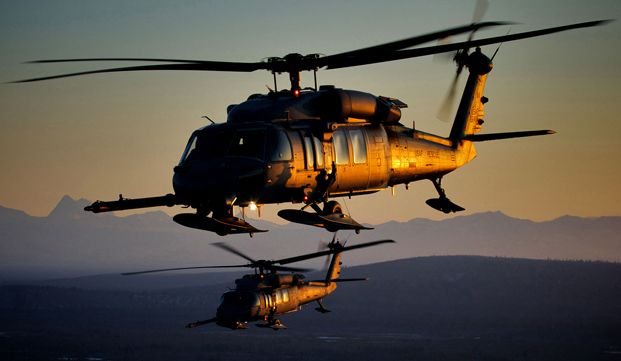After a dozen years of continuous combat in Southwest Asia, the term “warfighter” is in danger of being devalued by our political culture. In our eagerness to honor all those who serve, we make it sound like everybody who dons a military uniform is subject to the same risks, and burdened by the same sacrifices.
It isn’t so. Many so-called warfighters have never deployed to combat zones, and among those who have the dangers vary greatly. The hardest missions are performed by a relative handful of military personnel such as Army Rangers and Navy SEAL teams who routinely risk their lives in the performance of harrowing tasks. One such community of true warfighters is the Air Force’s personnel-recovery specialists, who fly helicopters into harm’s way to rescue endangered combatants and civilians.
With fewer than a hundred helicopters worldwide dedicated to that mission, it is a very small community. But since 9-11, this close-knit band of superbly trained specialists has saved over 5,000 U.S. and allied lives in the U.S. Central Command area of responsibility alone, and thousands of additional lives in other places (including storm-ravaged parts of America). During that same period, members of the personnel-recovery community have earned over 2,500 awards for their bravery. They have also seen 20 of their brethren die in combat.
Given the high demand for personnel-recovery services and the impressive performance of those who practice its demanding disciplines, you might surmise that Air Force leaders assign a high priority to keeping this very special community well equipped and ready for action. Well, no such luck: on any given day less than two-thirds of the helicopters in the dwindling personnel-recovery fleet are mission-capable, and this week Defense News reported there is no money budgeted for buying new rotorcraft or extending the lives of those already fielded.
The Air Force says it is committed to the mission. In fact, Acting Air Force Secretary Eric Fanning said it earlier this week at an Air Force Association breakfast. But when you don’t budget for the revitalization of a fleet that has grown decrepit with age, you are in effect backing away from the mission. So Aaron Mehta and Marcus Weisgerber of Defense News got it right when they wrote in the lead to their story this week that “the U.S. Air Force’s combat search-and-rescue mission is in danger of disappearing.”
Secretary Fanning says planners were asked to come up with ideas for modernizing the helicopters in the 2016 defense budget. That would make it ten years since the service first awarded a contract for replacement of what was already regarded as an aging fleet. Back then, in 2006, combat rescue was rated by Air Force leaders as their number-two modernization priority. Now there is less money to go around because of budget sequestration, and the program’s priority seems to have slipped to number five or six. So why would we assume progress in 2016?
The simple truth is that if we don’t fund a new Combat Rescue Helicopter now, then we aren’t going to do it later because money will remain tight. The composition of the defense budget is shifting away from investment so decisively that there will probably be less money later than there is today. So this is the thanks that some of bravest warfighters in the Air Force get for risking their lives on a weekly basis in godforsaken places like Anbar Province. We can’t afford to buy you safer helicopters, and we can’t afford to equip you for the rigors of saving lives tomorrow.
Someday, maybe someday soon, real warfighters are going to die because of the delay in replacing personnel-recovery helicopters. When that day comes, everybody in Washington will rush to praise the sacrifices of those who have fallen. Wouldn’t it make more sense to rearrange our priorities today so that they don’t have to die?









